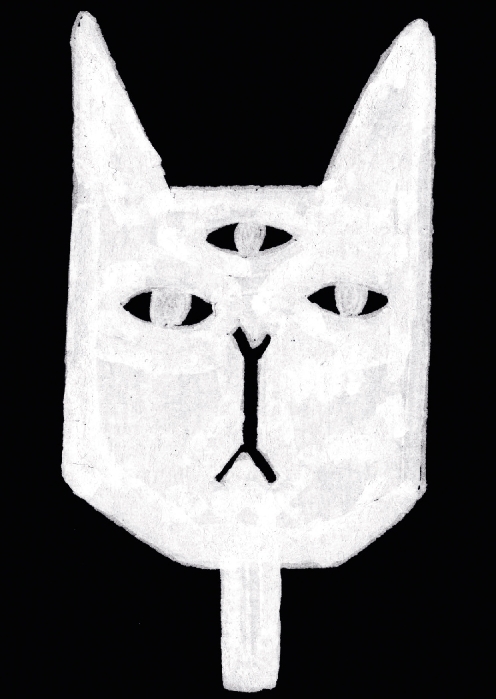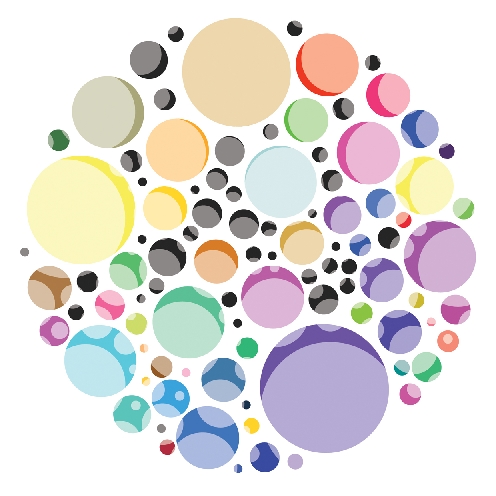
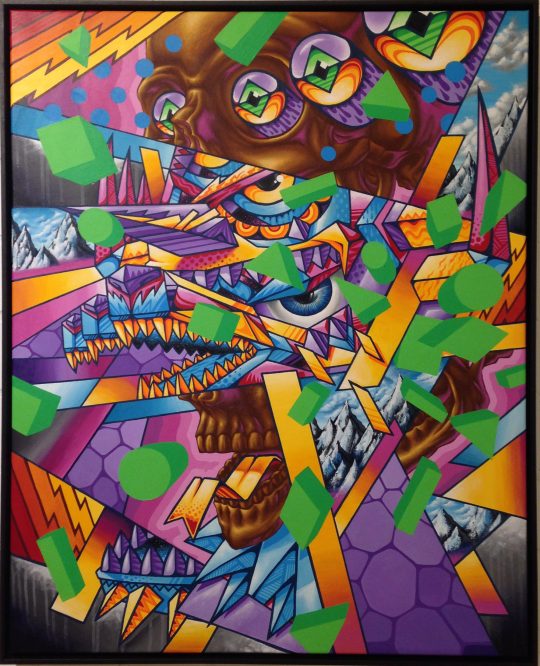

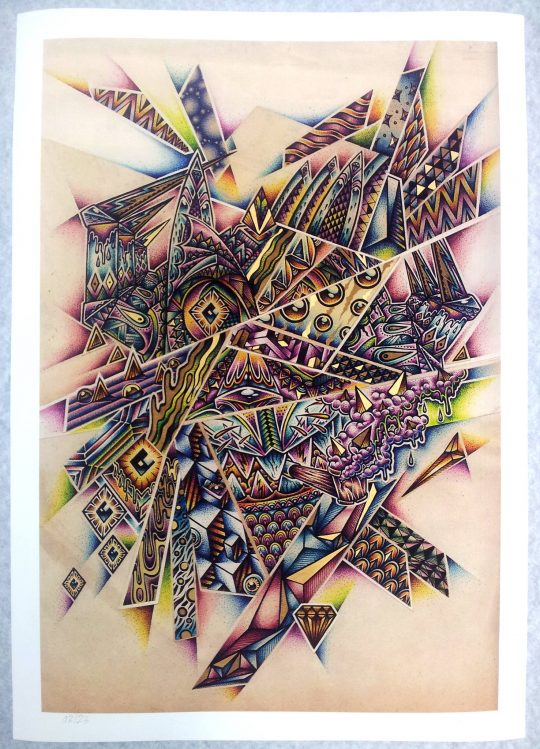

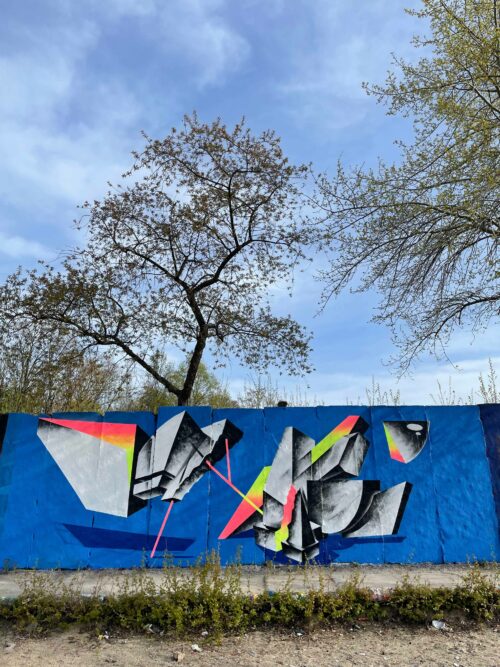

Base TwentyThree
BASE23 has in style writing his artistic roots since the late 80s, interested early in graffiti for letters but also for character and began to paint on paper, canvas and large format on walls. At that time in his early days he found his inspiration mainly in classic graffiti from New York, skateboard graphics, punk rock, underground comics of the 70s, toys and their packaging, especially from Japan. In 2009, after years of practicing classic style writing and character painting and tired of it, he created futuristic robot figures, which with their geometric angular shapes prompted him to want to work sculpturally in addition to his painted images, to develop artistically with another medium. From wood or cardboard he built his own characters, detailed futuristic colorful figures and heads, with angular geometric shapes. And in his current works, geometric, angular shapes continue to dominate and sculptural modeling and building volumes in his installations are an important part of his artistic work.
BASE23's preference for clear shapes and colors is expressed in his plastic painting. The art of Cubism, Futurism, and Suprematism, the artistic reduction of the depicted objects to geometric figures, fragmentation into individual fragments, non-objectivity, as well as pure color spectra, smooth surfaces, and rationality shaped BASE23, as well as modern architecture. The architectural style of Brutalism, with its pure geometric bodies that look like massive concrete ships with symbolic power, continues to impress and inspire the artist with lasting effect.
For several years BASE23 has combined painting and sculpture in impressive cross-space installations, playing with optical illusions of the surfaces of the 2nd and 3rd dimension. Here he creates large paintings that extend across multiple surfaces and are painted on two-dimensional surfaces as well as built three-dimensional volumes. With their massive presence in space, these installation works magically draw the viewer to want to grasp them all around or even step inside. Depending on the point of view, the optics change and initially an irritation arises: what is painted and what is built? It is precisely this play with deception, with fiction and reality, as well as this omnipresent ambivalence of images in our digital world that occupies the artist.
Painting remains the focus for BASE23 as well as the initial basis of his painterly work: the letters of his name BASE, which make up his artist identity. Here, too, the design with surfaces, volumes and colors is paramount. Again and again he literally dissects his painted name letters to create diverse abstract interpretations of the basic forms of the letters. They are reduced, geometrically stylized, often angular, deformed, warped, and thus intentionally illegible, developing their own formal language. In doing so, BASE23 builds in spatial representations, creates volumes, masses and perspectives with the abstracted letters. The two- or three-dimensional painted colored forms stand out from the monochrome background and seem to float. The finely constructed colored areas with shading and perfect color gradients form clearly designed graphic compositions in relation to each other. His color contrasts between muted earthy tones in reference to classical Baroque painting, as well as neon colors synonymous with the contemporary era are intense and create dynamism. With their smooth color surface and a technical perfection in execution, his paintings, whether painted with acrylic or spray can, seem intentionally like digitally generated images.
BASE23's current studio works on canvas and paper have an architectural, collage-like composition, forming a kind of patchy geometric construction with various colored surfaces and seeming to stand in nowhere. Some volumes seem heavy, some light, they seem formed from different material. Painted with clean and smooth textures on the natural background of the unprocessed beige canvas, one discovers small figurative elements, such as small fir trees of architectural models or a staircase leading to another level. The stagings seem surreal, deliberately difficult to classify in time, regardless of whether something is created, reconstructed or "torn down".
Whether with his wall paintings, his cross-room installations or studio works, BASE23 wants to counteract the fleeting viewing in our image-flooded world. His works invite the viewer to linger, contemplate and decode. Some time is needed to decipher the images, to let them take effect, and thus to grasp the dimensions, the different levels and the created space, the dynamics and the optics of BASE23's works.













